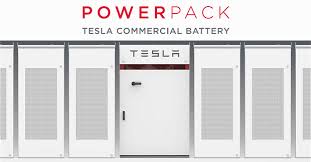BREAL

In order to meet our carbon reduction targets for the island’s energy system, additional generation from renewable sources would need to be added. Due to the export limit on the island’s grid connection, any additional renewables would have to be supplemented with storage, to keep exports within the limit. There are several options for modelling energy storage on HOMER, including different types of batteries, pumped hydro, supercapacitors and flywheels. It was decided to model with a storage technology that was mature and readily available on the market, so that the island could implement it soon if they desired – thus ruling out supercapacitors and flywheels. The potential for pumped hydro on the island was scoped out as there did not seem to be an obvious location for a reservoir. The island had previous difficulties and challenges with the potential installation of a vanadium redox flow battery, so this technology was also excluded. It was then decided to run a performance comparison for the island’s current energy system, between Lead-acid and Lithium-Ion batteries.
The graphs below (Tesla-left, Surette-right) highlight the better performance of the Tesla lithium-ion batteries. The 100% depth of discharge means that the whole rated capacity of the battery bank can be used, allowing for a higher use of generated electricity from renewables. The charge of the lead acid batteries must stay above 40% at all times, thus meaning stored energy from renewables will meet the load less often. The Tesla batteries also charge significantly quicker than the Rolls Surrette batteries, as can be seen in the graphs. When there is excess generation the Tesla batteries reach full charge in a shorter period of time, this can be seen in the higher gradient of the ascending gold line for lithium-ion than the lead acid batteries. A table comparing each system in terms of key performance metrics is shown below.
The purpose of implementing storage was to increase the use of generated renewable electricity, and decrease the carbon footprint and grid dependency of the island’s energy system. Each storage option was therefore compared in terms of grid purchases and sales and the resultant energy charge, carbon emissions and the renewable fraction (the percentage of energy consumed and exported on the island that came from a renewable source). This table emphasises the superior performance of the Lithium-ion batteries, which gave a higher renewable fraction and lower grid purchases and carbon footprint than the lead acid batteries. Despite the higher nominal capacity of the lithium ion batteries meaning that grid sales were significantly reduced compared to with lead acid, the net energy charge of the island was still lower with the lithium-ion batteries, due to the higher reduction in grid purchases. It was therefore decided to use the Tesla powerpack lithium-ion batteries as the primary storage option for the 2030 scenarios.
Create a free web site with Weebly





